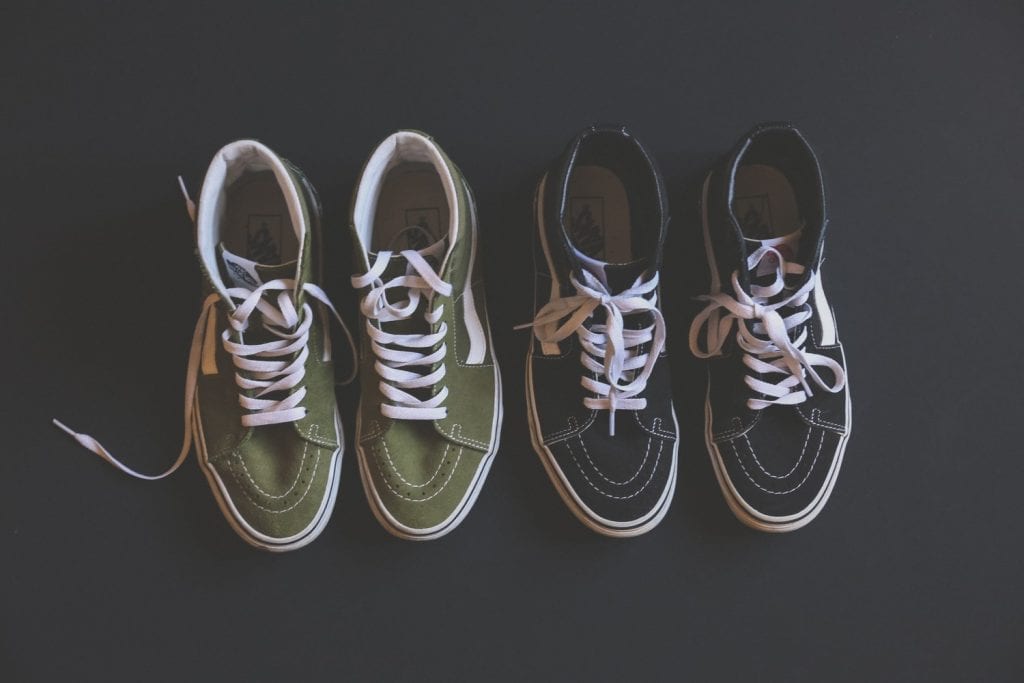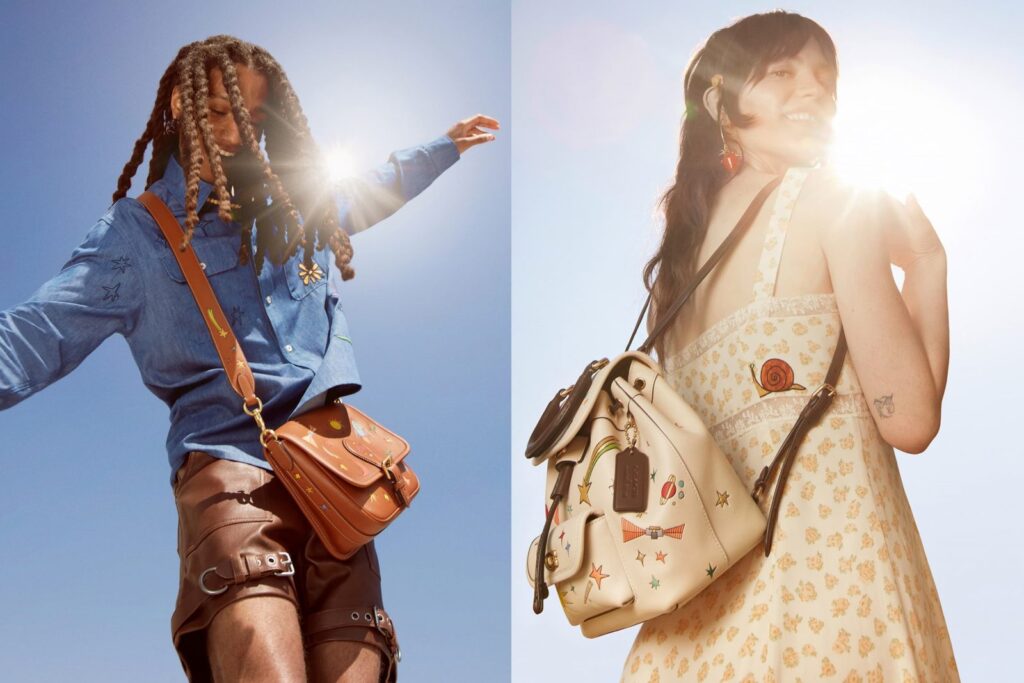“In an age of unprecedented technological innovation,” as Doug Palladini, Vans’ Global Brand President, describes the current state of things, Vans is doing things its own way. In other words, the brand – which got its start in sunny Santa Ana, California in the spring of 1966 under the watch of brothers Paul and Jim Van Doren and their business partners Gordon Lee and Serge Delia, who endeavored to produce simple-but-thick-soled slip on and lace-up sneakers in-house and selling them directly to a whole slew of So-Cal skaters and surfers – has continued to “lean on just five classic styles to drive its cultural relevance.” And that relevance, Palladini told Fortune, “has never been higher.”
That relevance can been seen not just in the streets, where Vans’ sneakers – many complete with the “jazz stripe” trademark on the side, the Vans equivalent of a source-identifying swoosh or three lines – have consistently found a home over the past 52 years. It can be found on the balance sheet.
This past fall, the stalwart sneaker-maker’s parent company VF Corp topped analysts’ estimates for its second quarter revenue, and a report this week from VF revealed that the same held true for the third quarter. For the 3-month period ending on December 29, VF reported a net income of $463.5 million, compared to a loss of $90.3 million, for the same quarter a year earlier.
These numbers, according to Reuters, were “boosted by demand for its high-margin Vans shoes.” Vans, which is being touted by CNBC as “the next major lifestyle brand,” is the magic-maker in VF’s sizable portfolio of apparel and footwear brands.
The question is now: What is boosting this ever-growing demand for Vans, the quintessential skate world (and increasingly, fashion world) footwear brand?
The recent quarter revenue reports from VF come not long after Piper Jaffray released its bi-annual “Taking Stock with Teens” report. After surveying more than 8,600 U.S. teens about their spending habits, the investment bank found that Vans – which first eclipsed outwear giant North Face as VF’s top-selling brand in March 2017 and now makes up almost 25 percent of VF’s annual sales – was the fastest-growing brand in terms of finding teens’ favor. Over all, Nike remains in the top spot, but Piper Jaffray noted that “staggering increases came from females, where Vans unseated Nike as the No. 1 brand among [upper-income] females.”
Over the past 15 years or so, Vans has been working hard. Despite widespread success, including ever-growing profits and a $43 million initial public offering in August 1991, as well as partnerships with the likes of the Warped Tour, appearances in cult films (such as Fast Times at Ridgemont High), when VF acquired Vans in 2004 for $396 million, it was widely understood that the company was hardly at the peak of popularity. In fact, it was almost exactly the opposite.
As Esquire’s Jonathan Evans wrote last year, “After riding the wave of the ‘90s skateboarding boom, Vans faced new competition from younger skate shoe brands like DC and Osiris. These companies—born only a few years earlier—favored a chunkier, more tech-forward silhouette (a word the fashion community uses to describe the shape of a shoe). Vans’ retro styling, by comparison, felt stale.”
“By the early years of the new millennium, nearly a decade of sustained growth had fallen off—as had customers’ goodwill,” he wrote.
Yet, the 90’s appeal of its staple styles – paired with “years of work expanding the brand’s appeal beyond teenage skateboarders,” as Fortune’s Phil Wahba wrote in March 2017 – is precisely what catapulted Vans into a modern, multi-billion footwear giant.
In an effort to expand upon its footprint and revenues, while staying true to its skater roots, Vans set out to improve its production and distribution channels, including making its shoes available directly to consumers online. It has also placed enormous focus on “really understanding everything there was to know about our consumers,” according to Vans’ Brand President Kevin Bailey.
The results have been significant and consistent. For instance, Vans saw impressive double-digit growth between 2010 and 2014, and then sales hit $2 billion for the first time ever. It was 2015, and Vans was on track to meet its five-year growth plan, which was announced in 2012 and called for $1 billion in revenue growth, up to $2.2 billion by 2016.
When the time came to assess the result of the plan in 2016, Vans’ sales had not only met the goal, they had surpassed it, reaching $2.3 billion in revenue. As for its gross margins, the money the company makes after subtracting the cost of goods sold, those have grown from 48 percent in the early 2000’s to 60 percent.
In light of these results, Vans has set loftier goals – to reach $5 billion in revenue by 2023 – and it is growing swiftly thanks to its favorable positioning as both nostalgia and streetwear continue to dominate the modern consumer psyche.
More than that, Vans has friends – and fans – in high places. From the feet of Justin Bieber, Kanye West and the Kardashian/Jenners to fashion editorials on Instagram, Vans’ wares are nearly unavoidable in 2018. And then there are the collabs. Earlier this month, for instance, Vans continued its successful partnership with cult streetwear/skatewear brand Supreme, which dropped a limited edition collab with Vans, offering up what Esquire called “a tweaked version of an under-the-radar silhouette dating back to 1995: the Sid Pro.”
Despite the explosion in popularity, the once-stagnant skater brand maintains that it has been able to revamp thanks to a razor-sharp focus on its root. “You’re not going to see us, as long as I’m around, having a basketball shoe or a football cleat. We did in the early ‘80s; we had football, basketball, racquetball, wrestling, skydiving, break-dancing … But we almost went out of business,” Steve Van Doren, Paul’s son and Vans’s Vice President of Events and Promotions, told Esquire. He is referring to Van’s overextension and subsequent Chapter 11 bankruptcy filing in 1984.
“So we had to come back to earth and get back to what we do,” says Van Doren. This has included being realistic about what products make sense for the Vans brand and “being selective about its products’ [distribution].” After all, “Ubiquity is not Vans’ objective,” Palladini told Fortune.
As of now, he says that Vans maintains just 5 percent of the $39 billion U.S. footwear market and 1 percent of the apparel market. In other words: there is a lot of room for growth, something that seems almost unavoidable for this brand.











